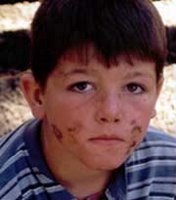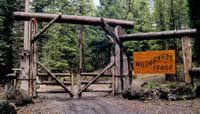Every Story Needs a Hero!

Every story needs a hero. But what does that hero want?
One awesome way to find out is to start with the hero’s real world. What does his or her day-to-day look like? Then introduce a problem—the kind of problem that will shake up their world.
It can be as simple as a 12-year-old boy named Nick kicking rocks on his way home from school. His real world is simply catching air on his skateboard and hanging with friends. Girls are a nuisance. Then, in the middle of kicking his rocks, he notices a girl. Wow!
Suddenly this girl seems like something worth having. She looks pretty awesome and Nick’s thinking he just may like to hang around with her for a while . . . maybe even figure out how to do that kissing thing. In fact, the more he looks at her, the more he thinks his world really is pretty dull without her.
What you’ve done is created a character, given him a setting and placed him in a scene that will give him a goal. In essence you’ve answered the age old question: This is a story about ?? who wants ?? but ?? stands in his or her way.
This is a story about Nick who wants the girl but his own fear stands in the way. And we will soon discover that his best friend also stands in the way, because he likes the same girl. Now we have a major problem.
Problems are conflicts…and conflicts make story. Every good story has a hero (protagonist), and every good story has an antagonist who is of equal strength or stronger. In nonfiction, the author is often the protagonist.
Another very important element is that goal. What does the character want? Sometimes it looks like the character wants one thing, and then it ends up beings something deeper than they first realized.
If any of these elements are missing in any scene, anecdote, chapter, or book . . . we feel cheated.
So, if your story isn’t working. If something seems shallow about it. Or it’s almost okay but not quite. Go back and see if you’ve left out one of these elements. That will help you set up structure, and structure is important BEFORE you start worrying about grammar and description and everything else you want to put in your story.
Give your character a problem that creates a goal. Then have your character take the first step toward that goal.
In this case, Nick takes the first step by kicking a rock toward the girl to get her attention. But instead of the rock simply landing at her feet, it bounces in the air and hits her on the chin. She screeches in pain and looks right at Nicky who simply stands there with a silly grin on his face.
“What did you do that for?” Beauty asks.
“Hi!” Nick says.
Beauty scowls and narrows her eyes. Then she reaches down and picks up the rock and throws it with the most perfect hard right Nick has ever seen. It hits him smack between the eyes, but he could care less. “Wow!” he says. “Where did you learn to throw like that?”
Beauty shakes her head and walks away.
What is the next step Nick will take to get her?
This is the pattern of the story. You introduce conflict, then you have your main character face the conflict and take the first step. Then you have a consequence and another conflict and another step and so on . . . all the way up to the major conflict, which is a make-it-or-break-it moment. These conflicts should escalate as the story progresses, then wham! The big moment. Nick has to have the girl. He will do anything to get her, even at the cost of his best friend.
Does he get her? Does he lose his friend? Will he have regrets? What is his new real world at the end of the story?
This is the pattern and heart of all good stories.
Do you have all the progression in your story? Or is there something missing? For those of you who don’t like to outline beforehand, this is a good way to figure out what’s wrong or missing in your story. For those of you who outline ahead, try mapping out this simple chart first. I use it all the time and it’s one of the best tools I’ve found.
Even when I’m reading someone else’s story, whether it’s fiction or nonfiction, I can figure out what’s wrong and where the weak spots are by simply following this simple progression. So, give it a try and have some fun while you’re at it.







0 Comments:
Post a Comment
<< Home